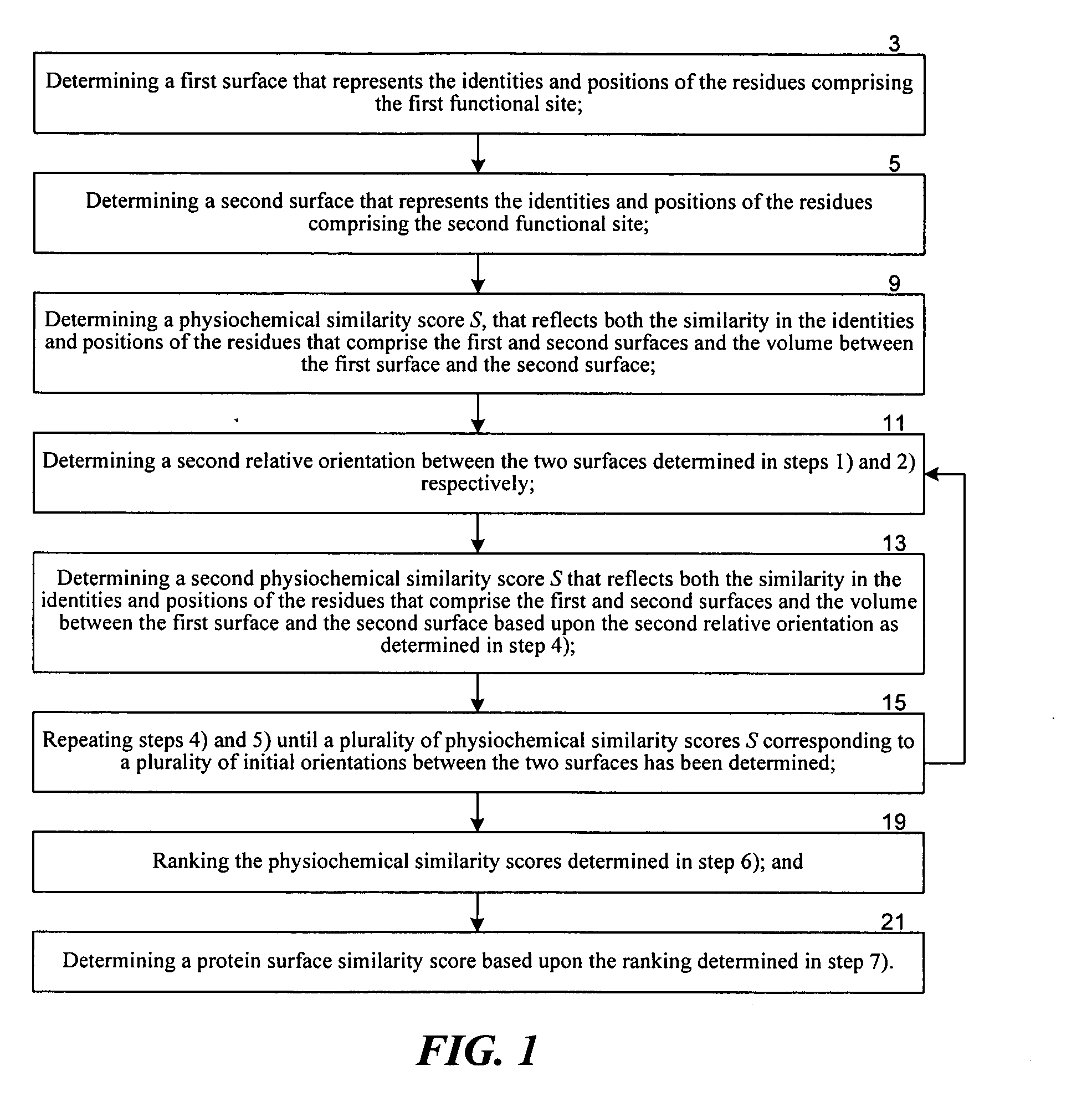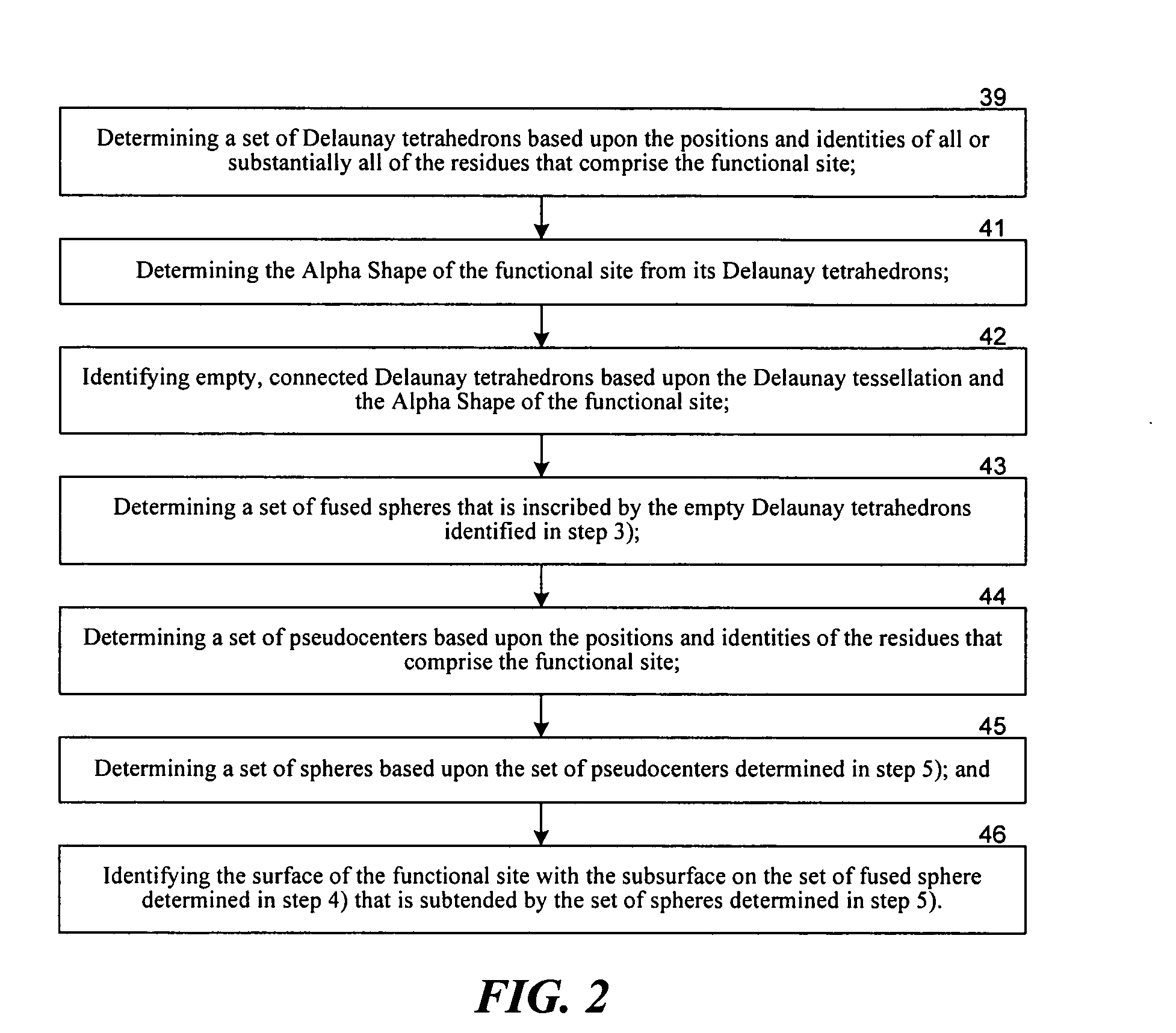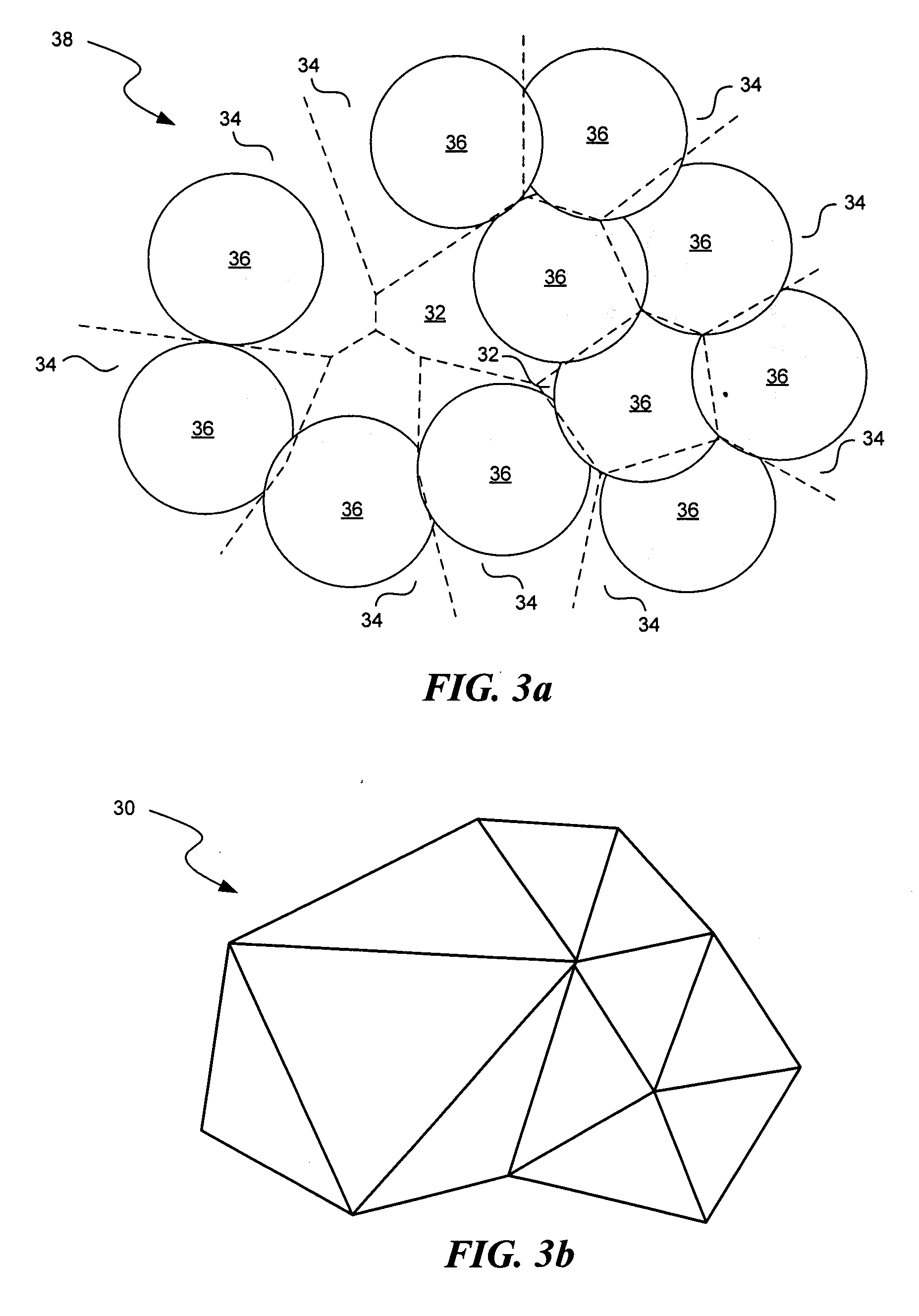Methods for comparing functional sites in proteins
a functional site and protein technology, applied in the field of protein functional site comparing methods, can solve the problems of inability to characterize functional residues, limited value for characterizing functional residues, and the inherently difficult implementation of protein surface comparison methods, and achieve computational efficiency and efficient calculation of physiochemical similarity scores
- Summary
- Abstract
- Description
- Claims
- Application Information
AI Technical Summary
Benefits of technology
Problems solved by technology
Method used
Image
Examples
Embodiment Construction
[0041] Methods According to the Invention
[0042] The functional site comparison methods according to the invention are based in-part upon the realization that the more topographically similar are two surfaces, the smaller the volume is between the two surfaces. As used herein, a surface refers to a mathematical representation of a protein surface. In the limit of identical surfaces, the volume between the two surfaces is zero for at least one orientation and the surfaces are perfectly superimposed. The claimed methods are also based on the realization that a still more sensitive measure of the similarity of two functional sites would consider the similarity in the positions and identities of the residues—the physiochemical topography, in addition to the gross topography. As used herein a residue refers to an amino acid. Accordingly, the functional site comparison methods according to the invention use a similarity score that jointly depends upon both 1) the volume between two surfac...
PUM
| Property | Measurement | Unit |
|---|---|---|
| radius | aaaaa | aaaaa |
| Shape | aaaaa | aaaaa |
| van der Waal's volume | aaaaa | aaaaa |
Abstract
Description
Claims
Application Information
 Login to View More
Login to View More - R&D
- Intellectual Property
- Life Sciences
- Materials
- Tech Scout
- Unparalleled Data Quality
- Higher Quality Content
- 60% Fewer Hallucinations
Browse by: Latest US Patents, China's latest patents, Technical Efficacy Thesaurus, Application Domain, Technology Topic, Popular Technical Reports.
© 2025 PatSnap. All rights reserved.Legal|Privacy policy|Modern Slavery Act Transparency Statement|Sitemap|About US| Contact US: help@patsnap.com



